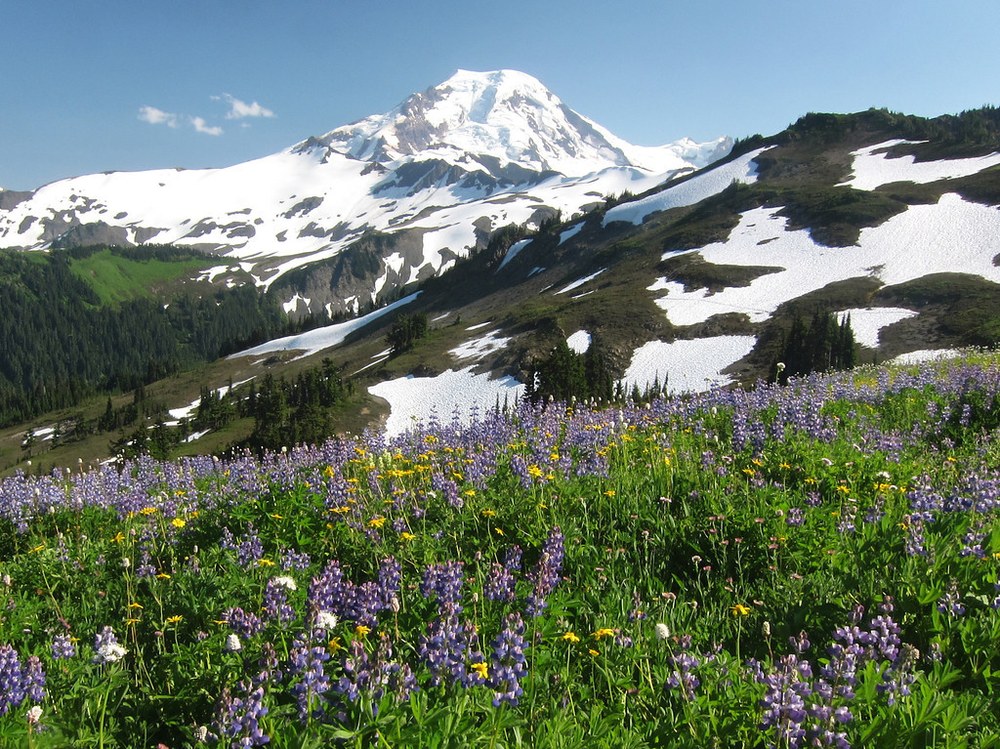
We know spring has arrived in the northwest when the crocuses worm their violet heads and long green bodies out of the dirt every March, a harbinger of brighter days. Our walks to work and school are dotted by blasting spring rains, and hikers slowly start to fill the trails again as snow melts and our forests become plump with moss and ferns.
But for all of spring’s tricks, we always circle back to one thing: flowers. Washington’s wildflowers are show-stoppingly beautiful, drawing folks out of their homes and onto the trail like herbaceous pied pipers. Grab your alpenstock and yodel a tune, the hills are alive and we’re off to sniff the flowers. These are a few of our favorites.
Avalanche Lily
This distinctly northwest flower is one of the prettiest you’ll find, with delicate white petals curling away from a yellow center, stamens proudly popping out to attract local bees. Found in alpine and subalpine regions in the Cascades and Olympics, avalanche lilies earned their name by blooming in late spring when the snowmelt begins, sometimes cropping up in large, dramatic patches. They’ll bloom through mid-to-late summer in damp meadows and around the edges of receding snowfields.
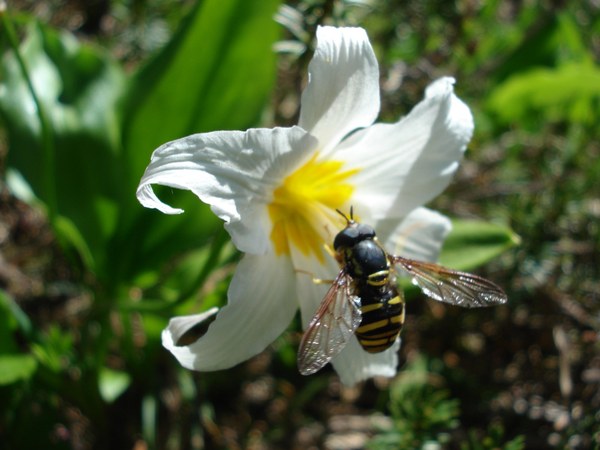 Avalanche Lily along the Skyline Trail, Mt. Rainier. Photo by Krystin Loving.
Avalanche Lily along the Skyline Trail, Mt. Rainier. Photo by Krystin Loving.
Elephant’s Head
The flower whose name can’t be forgotten! Take a close look at these densely-packed stalks of flowers and you’ll see little pink or purple elephant heads, trumpeting the arrival of spring. Common in meadows and near mountain streams, you’ll find these flowers primarily in the Cascades in high-elevation areas from June through November.
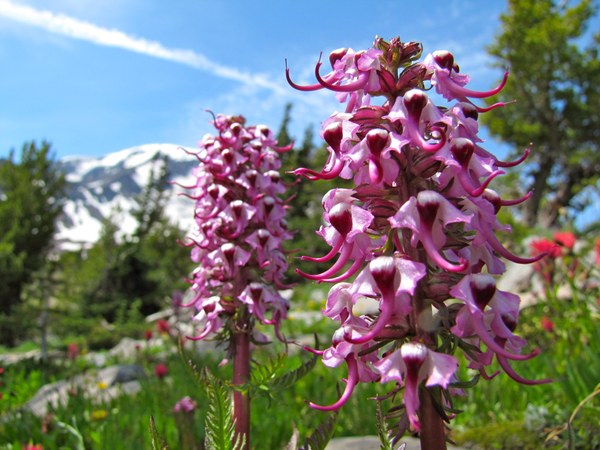 Elephant's Head near Mt. Rainier. Photo by Mickey Eisenberg.
Elephant's Head near Mt. Rainier. Photo by Mickey Eisenberg.
Balsamroot
Balsamroot is easily identified by its cheerful large yellow flowers and thick stalks. Also known as the “Oregon sunflower”, these hearty plants are commonly found in dry, cool mountain regions in Eastern Washington. Peaking in May and June, balsamroot was a significant food source for many local Native American tribes, who would grind its seeds into flour, eat stems raw, bake their thick taproots, and use leaves for medicinal purposes.
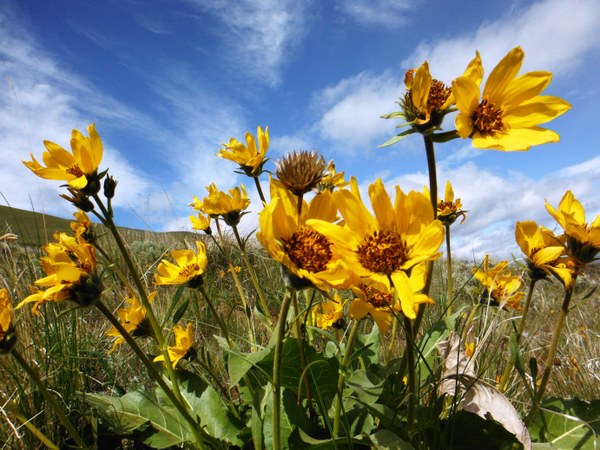 Balasmroot on Umtanum Ridge. Photo by Marguerite Hauberg.
Balasmroot on Umtanum Ridge. Photo by Marguerite Hauberg.
Red Columbine
Often found in well-heeled gardens, red columbine is also a wildflower found across the US. With many names to choose from – meeting-houses, rock-lily, jack-in-trousers, and cluckies, to name a few – these flowers are well-known and much-loved. A key food source for hummingbirds and a favorite of four bee species, red columbine dots the landscape in moist, open and partly-shared areas from coastlines to alpine meadows. Enjoy these flashy little red flowers from May through August.
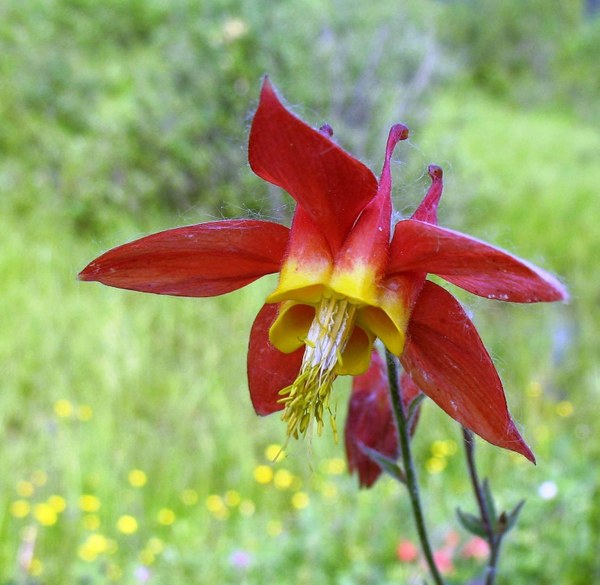 Red Columbine. Photo by Jessica Jeffery.
Red Columbine. Photo by Jessica Jeffery.
Learn More
Identify flowers (and much more!) with Field Guide to the Cascades & Olympics, offering a wealth of information on our native plants and animals. Or enjoy Best Wildflower Hikes Washington to pick the ideal spot to explore. Both books are published by Mountaineers Books and available at Mountaineersbooks.org, our bookstore, and wherever books are sold.
Lead Photo: Skyline Divide. Photo by Valerie Nelson.
This article originally appeared in our Spring 2020 issue of Mountaineer Magazine. To view the original article in magazine form and read more stories from our publication, visit our magazine archive.
 Hailey Oppelt
Hailey Oppelt